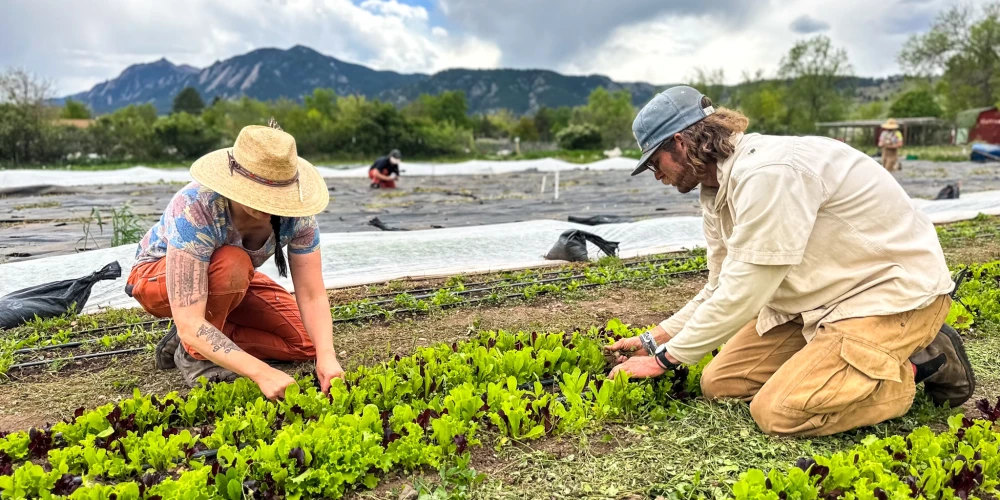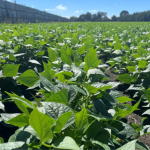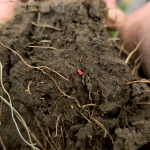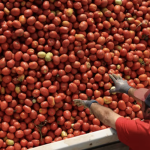We need regenerative agriculture, but how can farmers fund the transition
Added 2 years ago
By Hawke's Bay Future Farming Trust

“We're always asking what we want to achieve and then struggling to find funding to cover the capital needed to run a farm,” explains Matt Fitzgerald of Fitzgerald Organics in Hutchinson, Minnesota.
Of the 400 farms in his county, only five are organic. Fitzgerald's 2,500-acre family farm spans 40 miles and produces organic corn, soy, wheat, and specialty crops like beans and peas. Securing funding to shift to regenerative organic practices is challenging for farms of all sizes, yet it's crucial for ensuring future harvests.
Fitzgerald notes that while his farm primarily works with a community bank, lenders often don’t understand the unique risks of organic and regenerative farming. Furthermore, typical loans are for 12 to 18 months, which isn't sufficient given the multi-year nature of transitioning to regenerative practices.
Regenerative agriculture requires tailored solutions, as funding needs vary with each farm’s unique situation.
Multi-Year Credit Helps Established Farms
Recently, Fitzgerald Organics acquired 140 acres to transition to organic farming, implementing cover crops and pollinator strips. The first year saw yellow peas as a transition crop, but a hail event not covered by crop insurance in Minnesota led to losses. The second year involved growing winter wheat, which is less profitable.
“Historically, we’ve absorbed annual losses during transitions,” says Fitzgerald. However, partnering with Mad Agriculture helped. Mad Capital, part of Mad Agriculture, offers multi-year credit with options for interest-only or revenue-based repayment, easing financial pressure.
“All we do is work with organic farmers. We understand the risks and challenges,” says Brandon Welch, co-founder and CEO of Mad Capital. Mad Capital has financed over 30 farmers across 15 states, covering 79,000 acres with $25 million in loans for various expenses, including regenerative transitions.
“We listen to the needs of the land and farmers, unlike most companies,” adds Philip Taylor, co-founder and executive director of Mad Agriculture. They aim to reach a tipping point where regenerative organic agriculture becomes inevitable, supported by a recent $50 million investment round for its Perennial Fund II.
Using Corporate Dollars
“Food and fashion companies sourcing from agriculture realize they must work with farmers to meet environmental and social commitments,” says Lauren Dunteman of Terra Genesis. Brands can enhance sustainability by funding regenerative practices directly or indirectly, provided there's transparency between farmers and brands.
Brands may pay upfront, purchase at a premium, or sign multi-year contracts with farmers to support regenerative practices. Collaborating with producers from the start and honoring traditional knowledge is crucial for success.
For example, Timberland, Vans, and The North Face support regenerative rubber farming by paying premiums to farmers using traditional methods, incentivizing others to adopt similar practices.
Dunteman also highlights licensing climate and environmental outcome data as another funding avenue. This provides farmers an additional revenue stream while enabling brands to verify their environmental progress.
Small Farms and Conservation Grants
“It’s been incredibly frustrating,” says Lauren Kelso, site director at Growing Gardens and policy chair for Flatirons Farmers Coalition. Federal and state grant programs often benefit larger farms with the resources to submit strong applications. Smaller farms, lacking time or grant writing skills, struggle to secure funding.
Many small farmers find the low payments and extensive paperwork of grant programs not worthwhile. However, the Conservation Stewardship Program (CSP) through the NRCS has recently increased its minimum payment to $4,000 per year for smaller farms, making it a better option. The Colorado Department of Agriculture’s STAR program also offers a promising model with three-year funding and technical assistance.
Holistic Support
Organizations like the Savanna Institute and Slow Money, along with farming coalitions, provide support by investing in sustainable farms and offering resources like equipment rental. Peer-to-peer learning is essential, helping farmers transition to regenerative methods more efficiently.
Ultimately, a range of holistic solutions is needed to support farms of all sizes in adopting regenerative agriculture. “We need to recognize the public good of sustainable farming and be willing to pay for it,” concludes Kelso.
Join the conversation
Be the first to leave a comment.
Leave a comment
All comments are reviewed before they are published on the website. Your email address will not be published.



Community Engagement and Knowledge Sharing Strengthen the Carbon Positive Project

Are We Changing Soil Carbon Yet? Three Years In, the Jury’s Still Out

Farewell to Trustee Phil Schofield – A Foundational Leader of the HBFFCT

